Which of the following is a chemical property of a substance?
A. Density
B. Melting point
C. Boiling point
D. Reactivity with acid
Chemical properties are characteristics of a substance that describe its ability to undergo a chemical change or reaction with another substance. Reactivity with acid is a chemical property because it describes how a substance will react with an acid to produce a new substance.
Density, melting point, and boiling point are physical properties that describe how a substance behaves under certain conditions but do not involve a chemical change or reaction.
Therefore, the Correct Answer is D.
More Questions on TEAS 7 Science
-
Q #1: What is the name of the joint that allows for rotation of the arm at the shoulder?
A. Elbow joint
B. Hip joint
C. Knee joint
D. Shoulder joint
Answer Explanation

-
Q #2: Which of the following statements is true regarding vaccines?
A. Vaccines can cause the disease they are designed to protect against
B. Vaccines work by providing passive immunity to the individual
C. Vaccines work by exposing the individual to a weakened or inactivated form of the pathogen
D. Vaccines only provide protection against bacterial infections
Answer Explanation
Vaccines are a type of preventative medicine that work by exposing the individual to a weakened or inactivated form of a pathogen (such as a virus or bacteria) or to a piece of the pathogen (such as a protein or sugar) that triggers an immune response in the body. This exposure allows the body to develop immunity to the pathogen without getting sick from the full-blown disease. Once the immune system has been primed, it can recognize and quickly respond to the pathogen if it is encountered again in the future, providing protection against the disease.
It is a common misconception that vaccines can cause the disease they are designed to protect against. This is not true. While some vaccines may cause mild symptoms such as a low-grade fever or soreness at the injection site, they do not cause the full-blown disease.
Vaccines provide active immunity, meaning that the body produces its own antibodies against the pathogen, rather than receiving pre-made antibodies as in passive immunity. Additionally, vaccines can be effective against both bacterial and viral infections, depending on the specific vaccine.
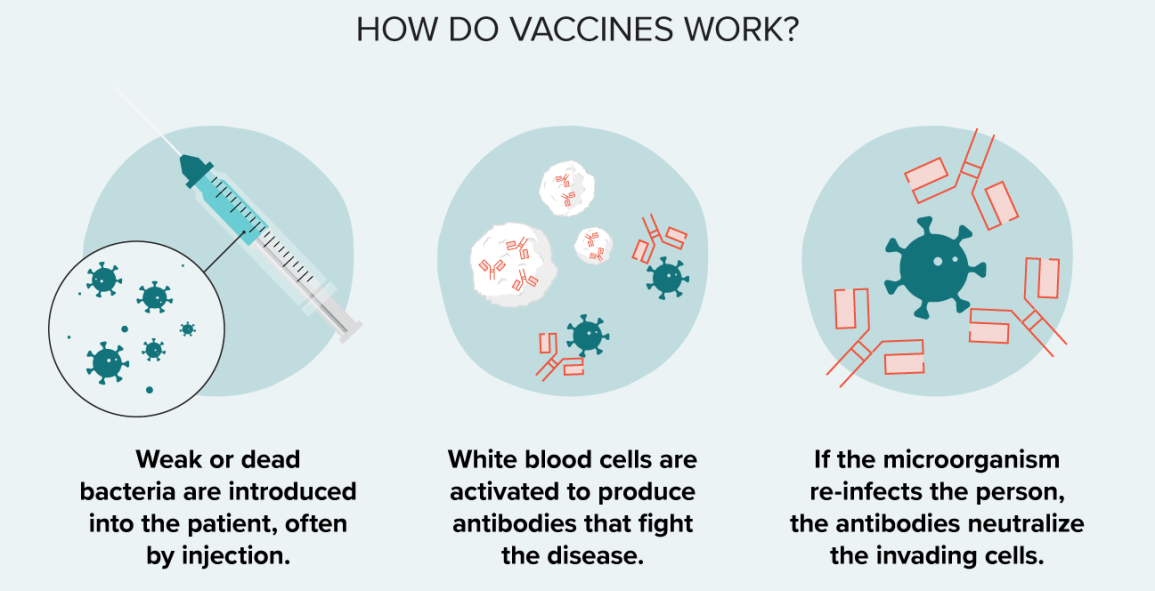
-
Q #3: What is the difference between innate and adaptive immunity?
A. Innate immunity is present at birth while adaptive immunity is acquired after exposure to pathogens.
B. Innate immunity is acquired after exposure to pathogens while adaptive immunity is present at birth.
C. Innate immunity is mediated by antibodies while adaptive immunity is mediated by T cells.
D. Innate immunity provides long-term protection while adaptive immunity provides only short-term protection.
Answer Explanation
Innate immunity and adaptive immunity are two arms of the immune system that work together to protect the body from pathogens. Innate immunity is the first line of defense and is present at birth. It includes physical and chemical barriers such as the skin, mucous membranes, and antimicrobial peptides, as well as cells such as macrophages and natural killer cells that can quickly recognize and atack pathogens. Innate immunity is nonspecific, meaning it responds to a wide variety of pathogens in a similar way.
Adaptive immunity, on the other hand, is acquired after exposure to pathogens. It involves the production of antibodies and activation of T cells, which are specific to particular pathogens. Adaptive immunity takes longer to develop than innate immunity, but it provides a more specific and targeted response to pathogens. Once the adaptive immune system has been activated against a particular pathogen, it can provide long-term protection against future infections with that pathogen.
Option b) is incorrect because innate immunity is nonspecific while adaptive immunity is specific. Option c) is incorrect because antibodies are a part of adaptive immunity while T cells can be a part of both innate and adaptive immunity. Option d) is incorrect because adaptive immunity can provide long-term protection, while innate immunity provides immediate but short-lived protection.

-
Q #4: Which of the following is a function of the respiratory system?
A. Transport of nutrients to the body
B. Pumping of blood to the lungs
C. Exchange of gases between the body and the environment
D. Digeson of food in the stomach
Answer Explanation
One of the main funcons of the respiratory system is to facilitate the exchange of gases between the body and the environment. During inhalaon, air enters the lungs and oxygen is absorbed into the bloodstream. During exhalaon, carbon dioxide is removed from the body and expelled into the environment.

-
Q #5: A researcher collects data on the number of cars passing through a busy intersection at different times of the day for a month. This data would be most useful to analyze which of the following:
A. traffic patterns during rush hour
B. pedestrian movement during the day
C. air pollution levels in the area
D. noise levels in the area
Answer Explanation
The data collected by the researcher on the number of cars passing through a busy intersection at different times of the day for a month would be most useful to analyze traffic patterns during rush hour.
-
Q #6: Which of the following types of RNA carries amino acids to the ribosome during protein synthesis?
A. Messenger RNA
B. Ribosomal RNA
C. Transfer RNA
D. Small nuclear RNA
Answer Explanation
Transfer RNA (tRNA) is a type of RNA molecule that carries amino acids to the ribosome during protein synthesis. Each tRNA molecule has a specific sequence of three nucleotides called an anticodon, which pairs with a complementary codon in the messenger RNA (mRNA) sequence. Each tRNA also carries a specific amino acid that corresponds to the codon it recognizes, allowing the ribosome to link the amino acids together in the correct order to form a protein.
In contrast, messenger RNA (mRNA) carries the genetic information from the DNA to the ribosome, where it serves as a template for protein synthesis. Ribosomal RNA (rRNA) is a component of the ribosome itself, where it helps to catalyze the formation of peptide bonds between amino acids. Small nuclear RNA (snRNA) is involved in splicing of pre-mRNA molecules during post-transcriptional processing.
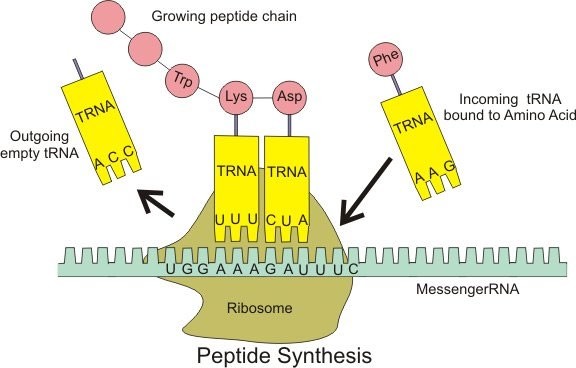
-
Q #7: What is the name of the valve that separates the left atrium and left ventricle in the heart?
A. Aortic valve
B. Mitral valve
C. Tricuspid valve
D. Pulmonary valve
Answer Explanation
The mitral valve is located between the left atrium and left ventricle of the heart and helps to regulate the flow of blood between these chambers. It consists of two leaflets or flaps that open and close in response to changes in pressure as the heart beats.
During diastole, when the heart is relaxed and filling with blood, the mitral valve opens to allow blood to flow from the left atrium into the left ventricle. During systole, when the heart contracts to pump blood out of the left ventricle and into the systemic circulation, the mitral valve closes to prevent backflow of blood into the left atrium.
The mitral valve is one of four valves in the heart that help to ensure the unidirectional flow of blood through the heart and the rest of the circulatory system. Problems with the mitral valve, such as mitral valve prolapse or mitral stenosis, can lead to a range of symptoms and complications, including shortness of breath, fatigue, chest pain, and heart failure.
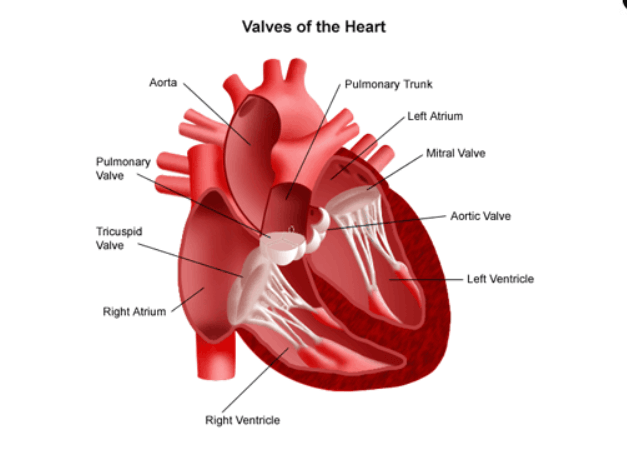
-
Q #8: Which of the following is the process by which DNA is copied into RNA?
A. Replication
B. Transcription
C. Translation
D. Mutation
Answer Explanation
Transcription is the process by which DNA is copied into RNA. During transcription, the DNA molecule unwinds and RNA polymerase reads the DNA sequence and synthesizes a complementary RNA molecule using the DNA as a template.
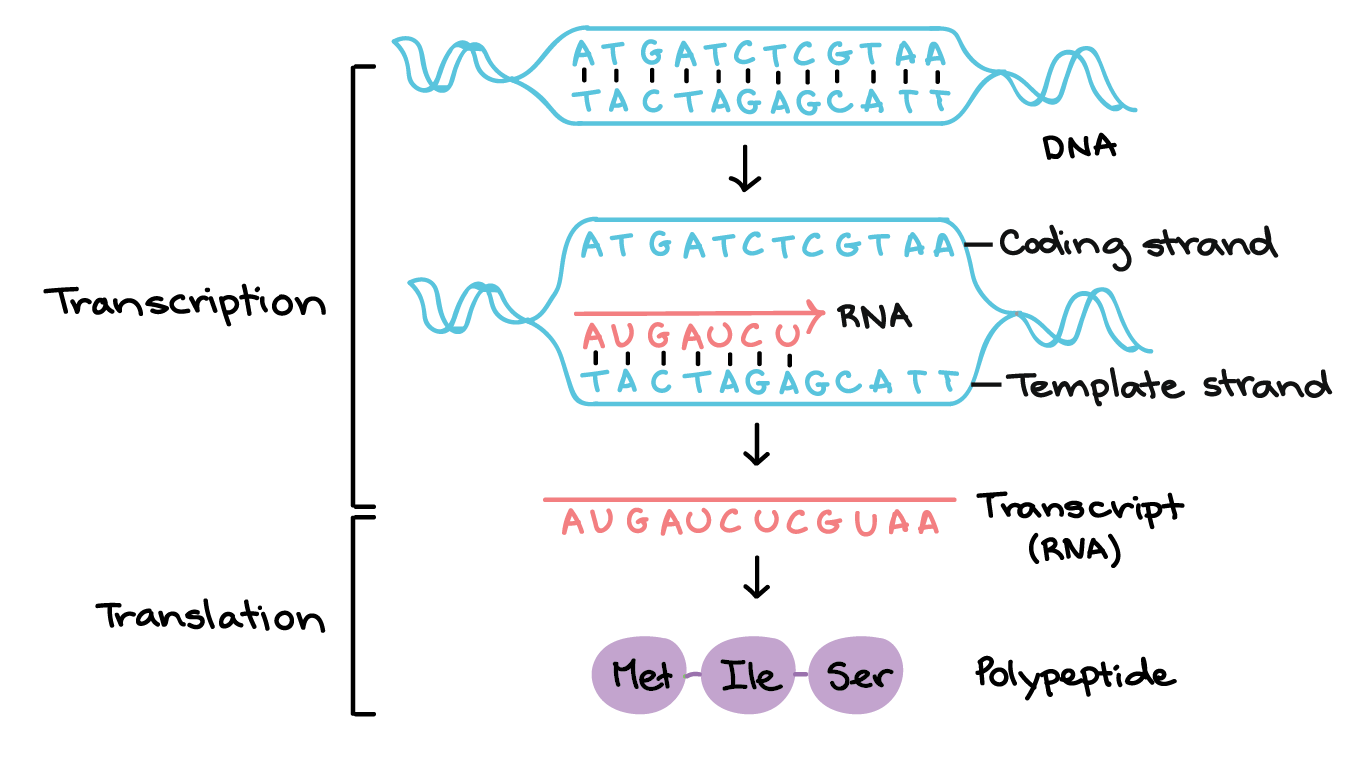
-
Q #9: Which of the following is an example of a double-blind study?
A. participants are randomly assigned to a treatment group or a control group
B. participants and researchers both know which group participants are assigned to
C. participants do not know which group they are assigned to, but researchers do
D. Both participants and researchers do not know which group participants are assigned to
Answer Explanation
A double-blind study is a research design in which neither the participants nor the researchers know which group participants are assigned to. This is done to minimize bias and ensure that the results of the study are as objective as possible. In a double-blind study, the treatment and control groups are randomly assigned, and the participants and researchers are unaware of which group each participant is assigned to.
Option a) is an example of a randomized controlled trial, which is a common research design, but it is not necessarily double-blind.
Option b) is an example of an open-label study, in which both the participants and the researchers know which group each participant is assigned to.
Option c) is an example of a single-blind study, in which the participants do not know which group they are assigned to, but the researchers do.
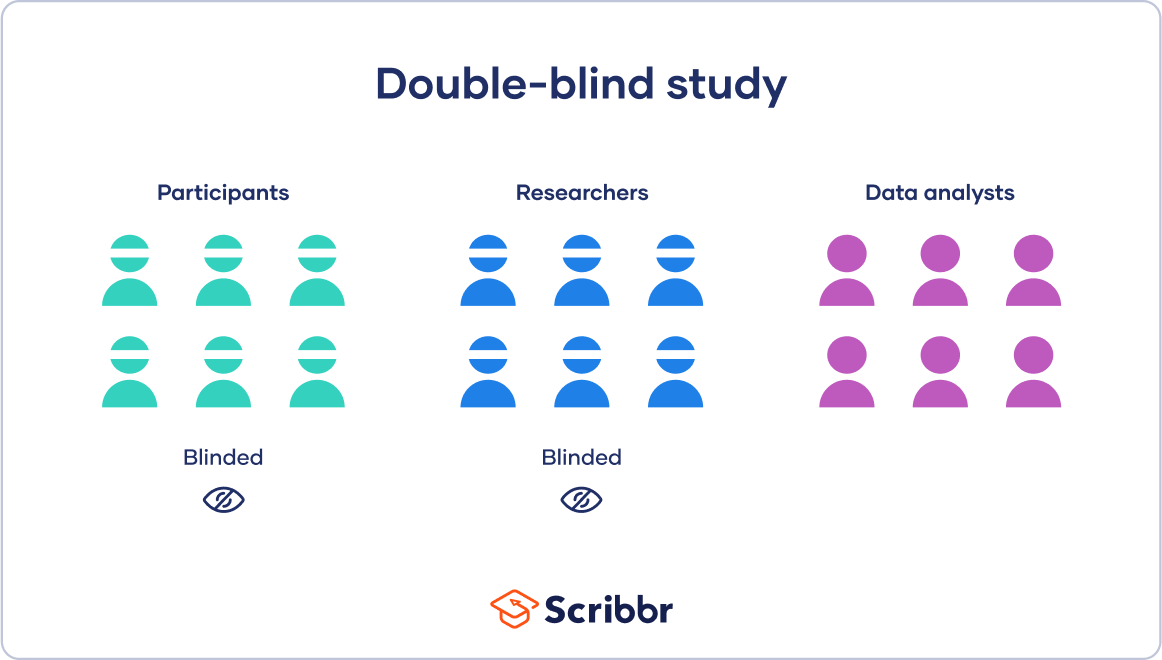
-
Q #10: Which statement best defines the difference between a physical change and a chemical change?
A. A physical change involves the rearrangement of atoms and molecules while a chemical change involves the formation of new substances with different chemical properties.
B. A physical change involves the change of one state of matter to another while a chemical change involves the change of one substance into another.
C. A physical change involves the breaking of chemical bonds while a chemical change involves the breaking of intermolecular forces.
D. A physical change involves the release of energy while a chemical change involves the absorption of energy.
Answer Explanation
A physical change is a change that affects the physical properties of a substance, but does not change its chemical identity. Physical changes include changes in state, such as melting or boiling, changes in shape or size, and changes in phase, such as the dissolution of a solid in a liquid.
A chemical change, on the other hand, is a change that results in the formation of new substances with different chemical properties. Chemical changes involve the breaking of chemical bonds between atoms and the formation of new bonds to create new compounds. Chemical changes are usually accompanied by a change in color, the formation of a gas or a solid, or the release or absorption of energy.
Overall, the main difference between a physical change and a chemical change is that a physical change only affects the physical properties of a substance while a chemical change results in the formation of new substances with different chemical properties.
Note: Choice B is partially cirrect since physical changes can involve changes in the state of matter (e.g., ice melting into water), but it's not the main characteristic. A chemical change typically involves the change of one substance into another with different chemical properties.
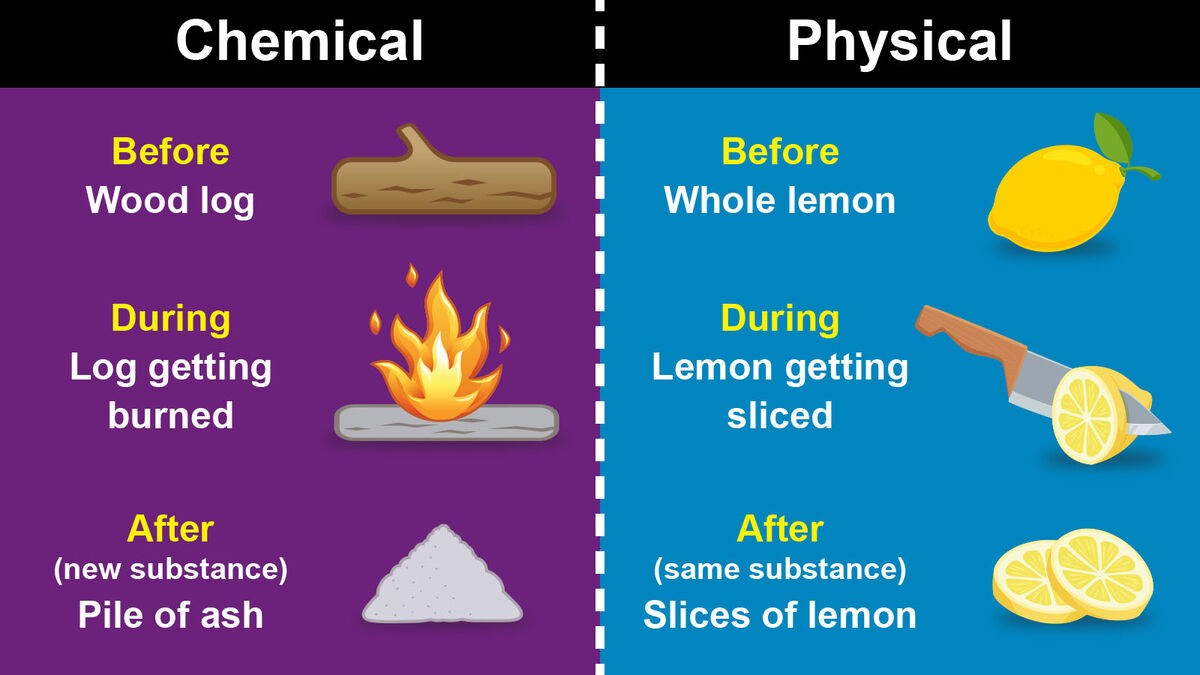
Free Access on TEAS 7 Exams and Study Notes
- Access to all TEAS 7 Exams
- Performance Tracking and Analysis
- Well Documented and Explained Questions and Answers
- 2000+ Questions and Correct Answers: Answers Well Explained
- Libary of Detailed StudyNotes
- Topical Questions and Answers on Examinable topics
TEAS 7 Exams (Q&A)
TEAS 7 Study Notes
TEAS 7 Topical Tests

TEAS 7 Study Guides
Quick Links
Refer a Friend
Refer a friend and claim free unlimited access

© 2024 ExamGates Made with by ExamGates
